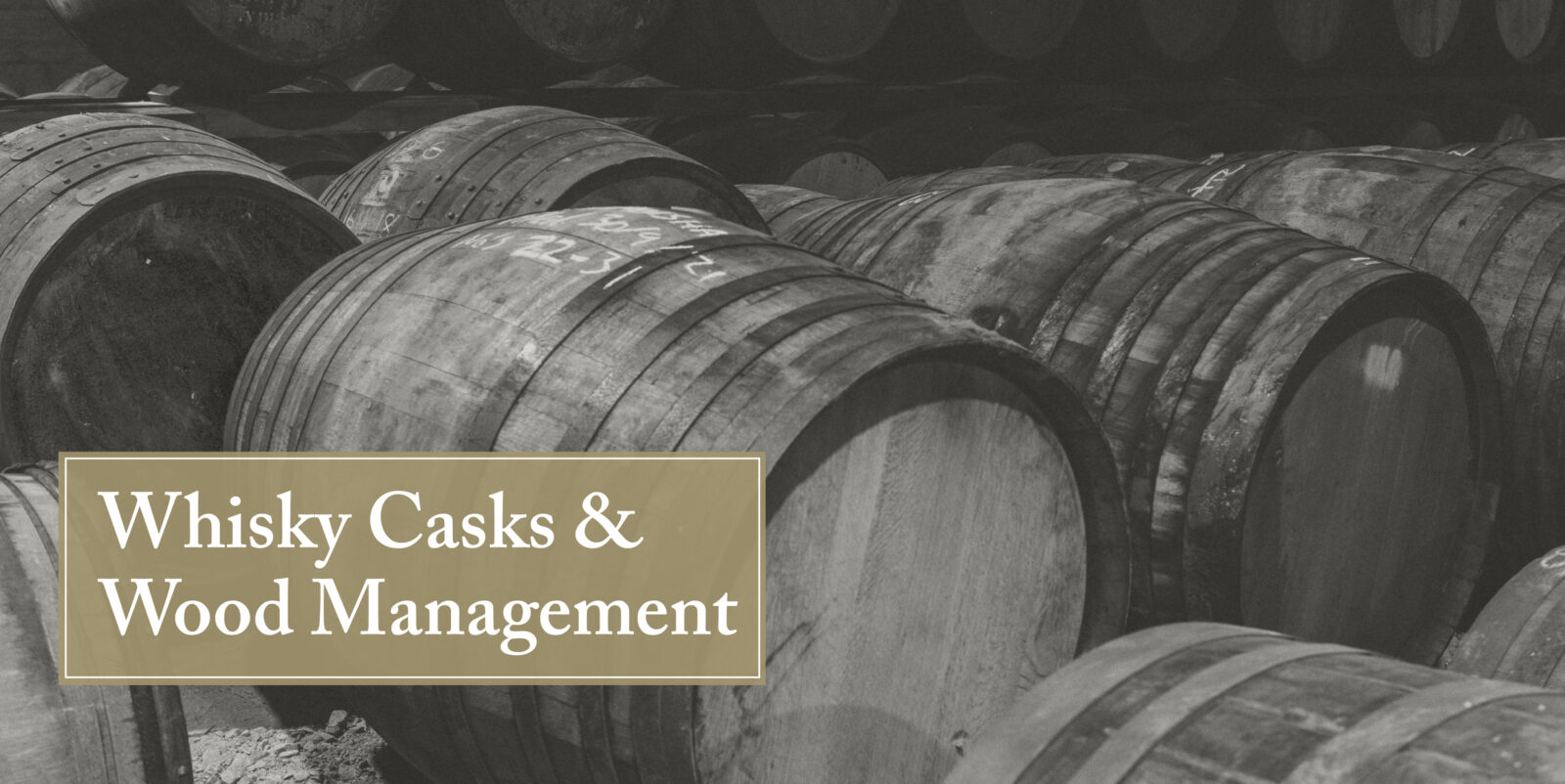Once you have bought your first whisky cask, your investment journey doesn’t stop there. In fact, it has only just begun. Investing in a whisky cask doesn’t just give you access to an asset that automatically appreciates; it also provides you with an investment that you can curate to increase its value.
Unlike most other assets, a whisky cask is an investment that can be managed and improved to maximise your returns. With whisky casks, your portfolio manager can advise you on how to finish the spirit in your cask to create a unique whisky that will fetch a higher price when the time comes to exit your investment, either by selling on to another investor or to one of the many independent bottlers that purchase rare and speciality single-malt whisky casks.
But how does the cask affect the price of the whisky? And which cask can bring the best value to an investment?
Bourbon or Sherry?
Bourbon must be matured in new barrels, which means there is a good supply of used casks for the Scotch whisky industry. Used barrels are shipped from the USA to Scotland either whole or broken down into staves to be filled with new make spirit, turning them into first-fill casks. Larger hogsheads are constructed from broken-down barrels with additional staves added.
The type of oak used in the cask and the way it was originally toasted and charred affect the flavours that it imparts, as does the number of times the cask is used. As a result, most distilleries have clear cask preferences. Laphroaig, for example, uses only first-fill Maker’s Mark casks. Other Scottish distilleries prefer casks from different bourbon producers, while some choose second, third or even fourth-fill casks in order not to overwhelm the spirit.
After several refills, a cask becomes depleted. However, it can be rejuvenated at the cooperage by shaving off its inner layer and toasting and charring it again.
Sourcing non-bourbon casks
Demand for single-malt whisky that is matured or finished in sherry casks, and to a lesser extent in wine, port, madeira and rum casks, has increased exponentially. This has put pressure on the market for these casks, pushing prices up.
Most sherry now being produced is used to season casks for the maturation of single-malt whisky. Clients can order a cask from a sherry producer and specify whether it should be seasoned for 12 months, 24 months or longer.
This means that sourcing casks has become an important of part of distilleries’, bottlers’ and whisky cask brokers’ expertise. Some sherries are preferred over others for finishing whisky, with Oloroso and Pedro Ximenez among the most popular. The Macallan and Dalmore favour Oloroso casks, for example.
Some individual sherry casks are better than others, and an ‘off’ cask can impart unwanted notes of sulphur. Used sherry casks also contribute differently to the whisky from seasoned casks. There isn’t much activity in the wood of a 40-year-old sherry cask, but it will supply colour and flavour from the sherry that has been matured in it over the years. Therefore, this kind of cask is more appropriate for second maturation, while a seasoned cask, which will impart flavours from the wood as well as the sherry, is more typically used to mature new-make spirit.
Cask provenance
Scotch whisky distilleries have also been experimenting with maturing their spirit in casks made from different kinds of oak. Bowmore has released a single malt finished in Japanese mizunara oak (quercus crispula) casks. As the different properties of different oaks become better understood, emphasis on provenance and terroir– already a topic for barley, peat and water – is increasing in the area of casks.
The growing emphasis on provenance is already discernible in the area of wine casks, which are increasingly used in single-malt whisky maturation. Some whisky companies are not just sourcing casks from specific vineyards but are asking for certain vintages. Often, however, naming rights are restricted with these wine casks, and it is not possible to name the château from which the cask came, only the region.
Caring for your cask
An important advantage of investing in a cask through a portfolio manager is that they will care for your cask for you. For example, Braeburn Whisky looks after the majority of its clients’ casks in its client-use warehouse facility in Speyside. Your cask is likely to be better cared for at a proprietary facility such as this than at the distillery because there are fewer casks to look after and every cask is important, as it is someone’s investment.
Monitoring your cask and completing any necessary repairs becomes more important as it ages, not least to ensure the ABV of the spirit does not dip below the desired level or below the minimum 40% ABV level for bottling as single-malt whisky. Older spirit evaporates less quickly because it is less volatile, but an annual weight gauge is recommended if the cask reaches an ABV in the mid-40s.
Curating your cask
Investing in a whisky cask is not just about buying a cask and storing it until you are ready to sell. It is also about creating a unique and desirable spirit either to bottle yourself or to sell to an independent bottler.
A professional can advise you on how best to maximise the value of the spirit in your cask. This is partly about determining the optimum length of time to leave the spirit in the cask. Your spirit becomes more valuable as it matures, but there is a curve, and so it’s important to find the sweet spot. The timescale will also be determined by your investment objectives.
A broker can also help you to perfect the spirit in your cask by re-racking it. This is a process whereby the spirit is placed in a new cask for a period usually ranging from six months to three years for finishing. Single-malt whisky is often finished in ex-sherry casks, but wine, port, madeira, tequila, rum and mescal casks can be used.
The right finishing cask for your spirit depends on the new make spirit in the cask, the elements already imparted by the initial cask, and the flavour and colour profile that you want to achieve. It also depends on the casks that your portfolio manager can offer. A good portfolio manager will have excellent relationships with cooperages, sherry producers and vineyards to source the best casks.
In addition, the best choice of finishing cask is governed by market trends and availability. Your portfolio manager is not just there to sell you a cask. They can also help you create a spirit that is desirable for other investors or to the independent bottlers who produce the whisky industry’s finest bottlings.
Another option is to split a cask for second maturation into smaller casks such as octaves. This allows to create two or more different whiskies from one cask.
If you own one, or a number of casks, it may be time to speak to your portfolio manager about the best way to maximise your returns when the time comes to sell.

